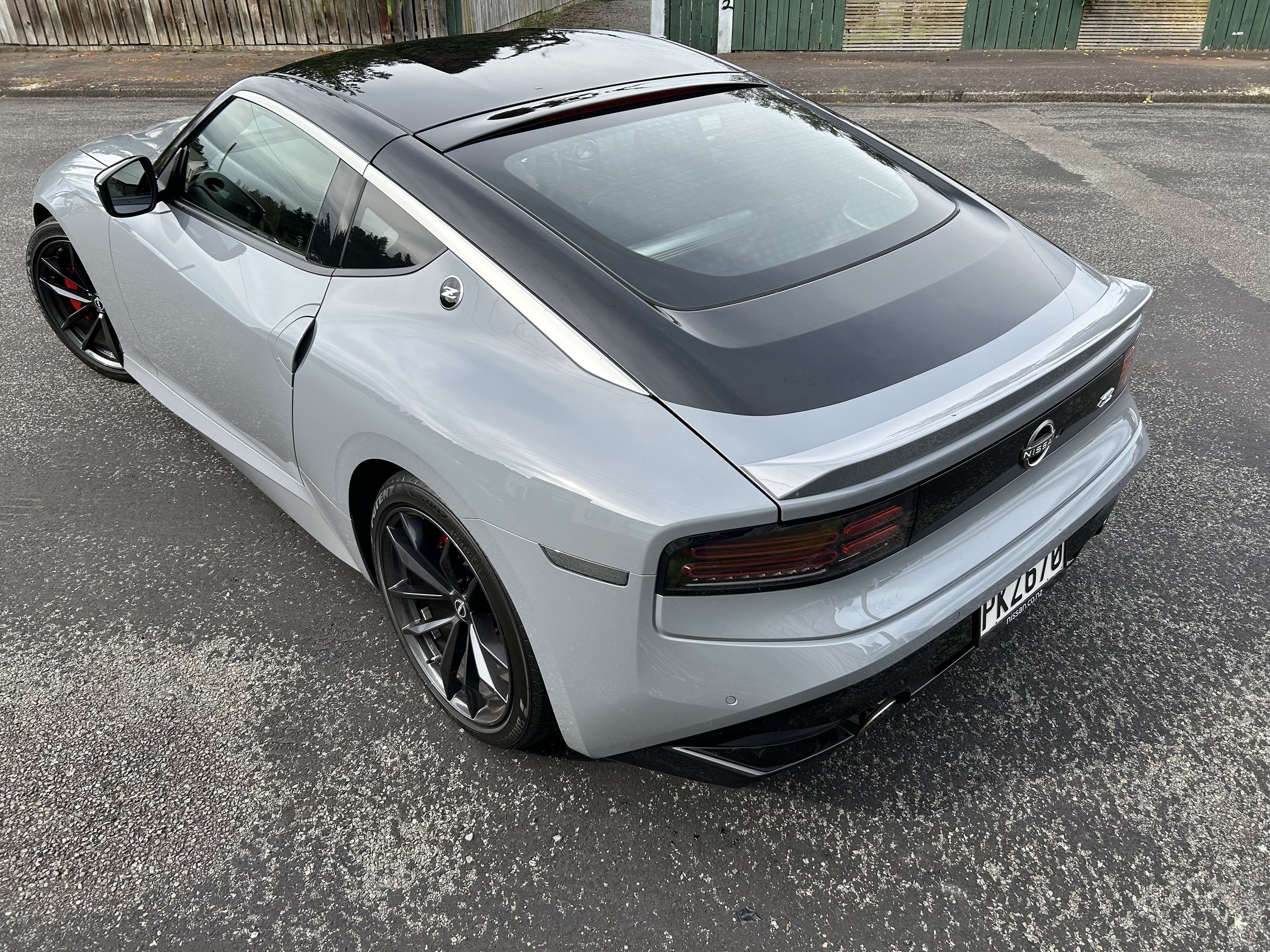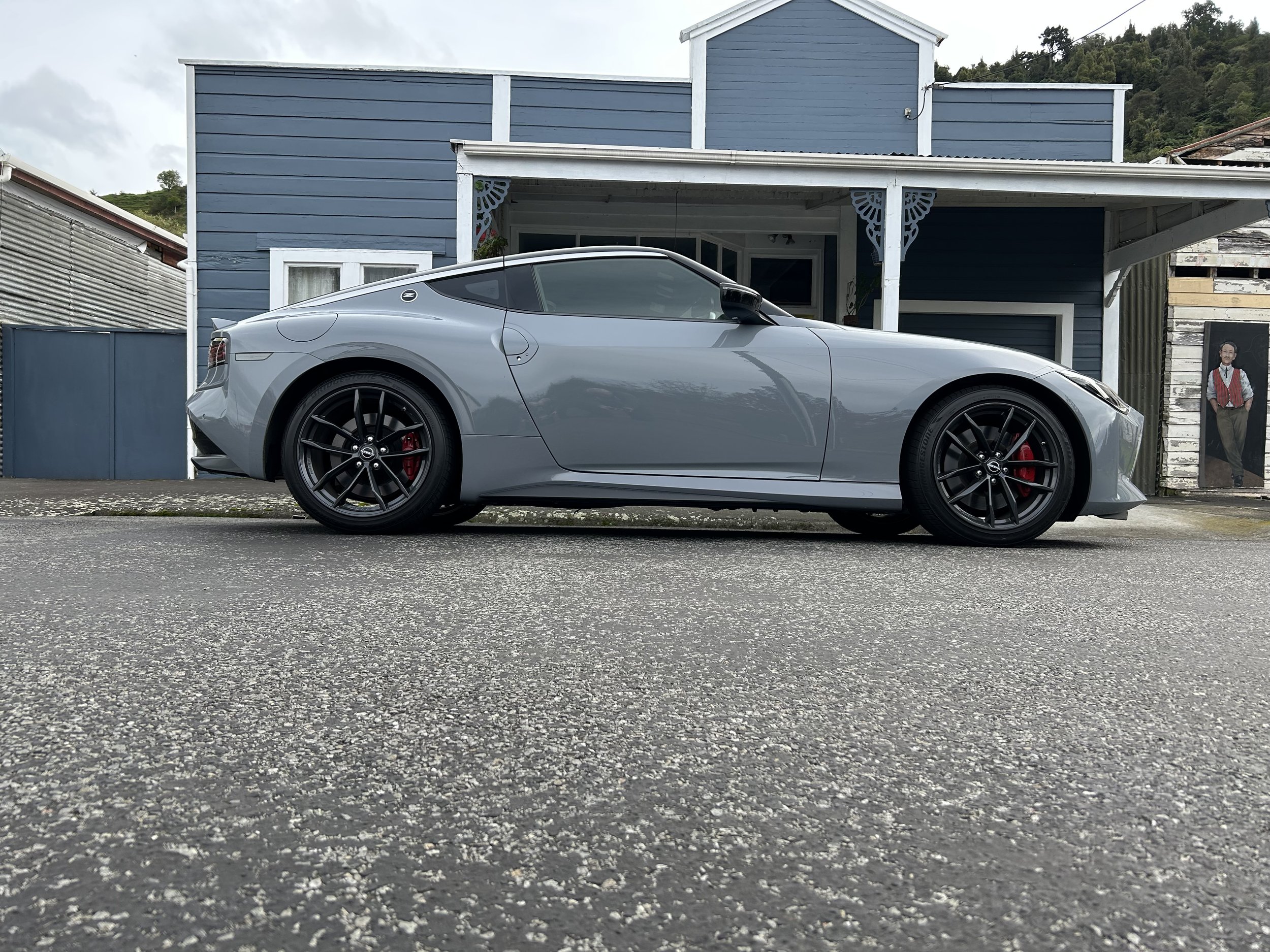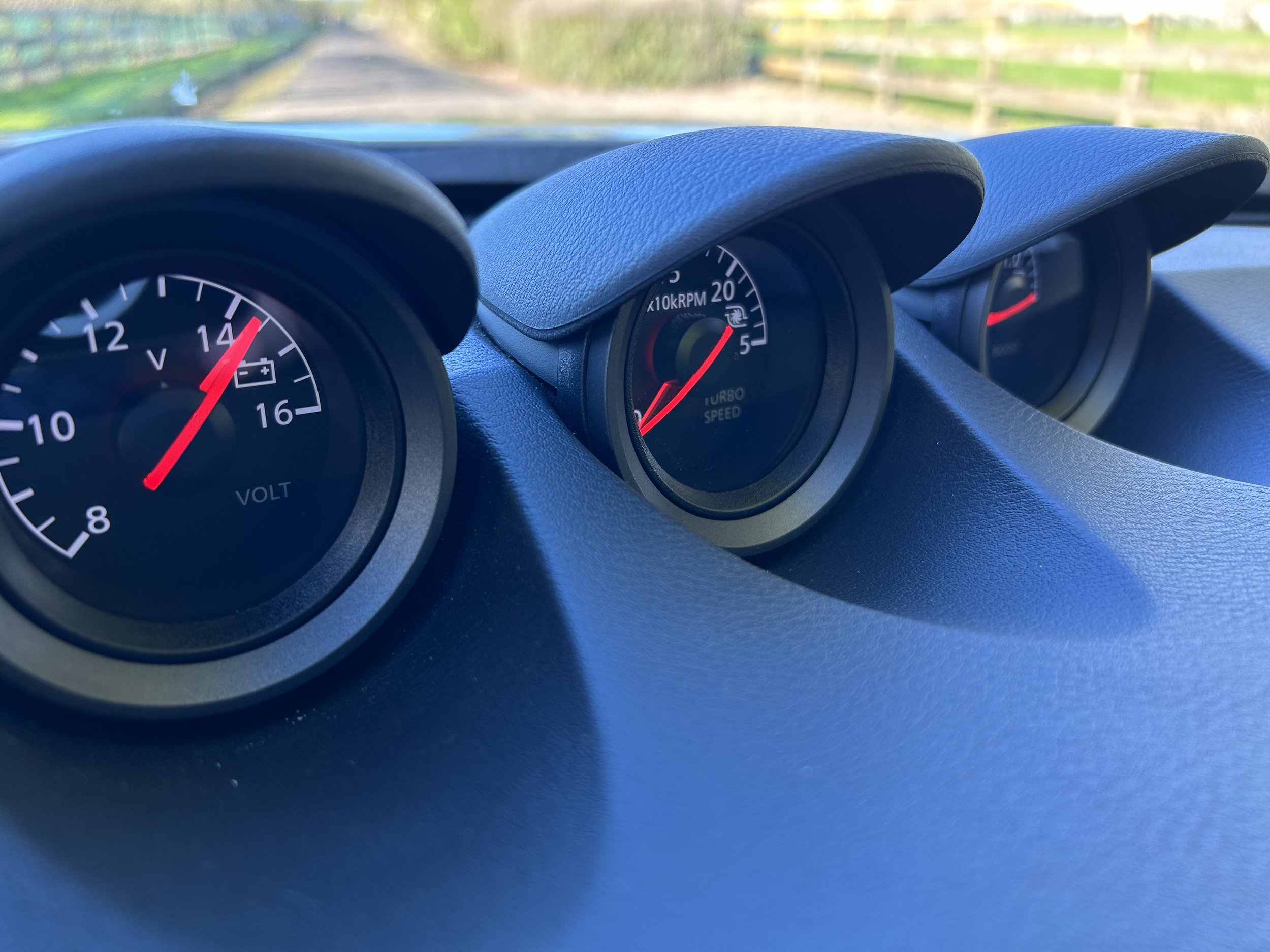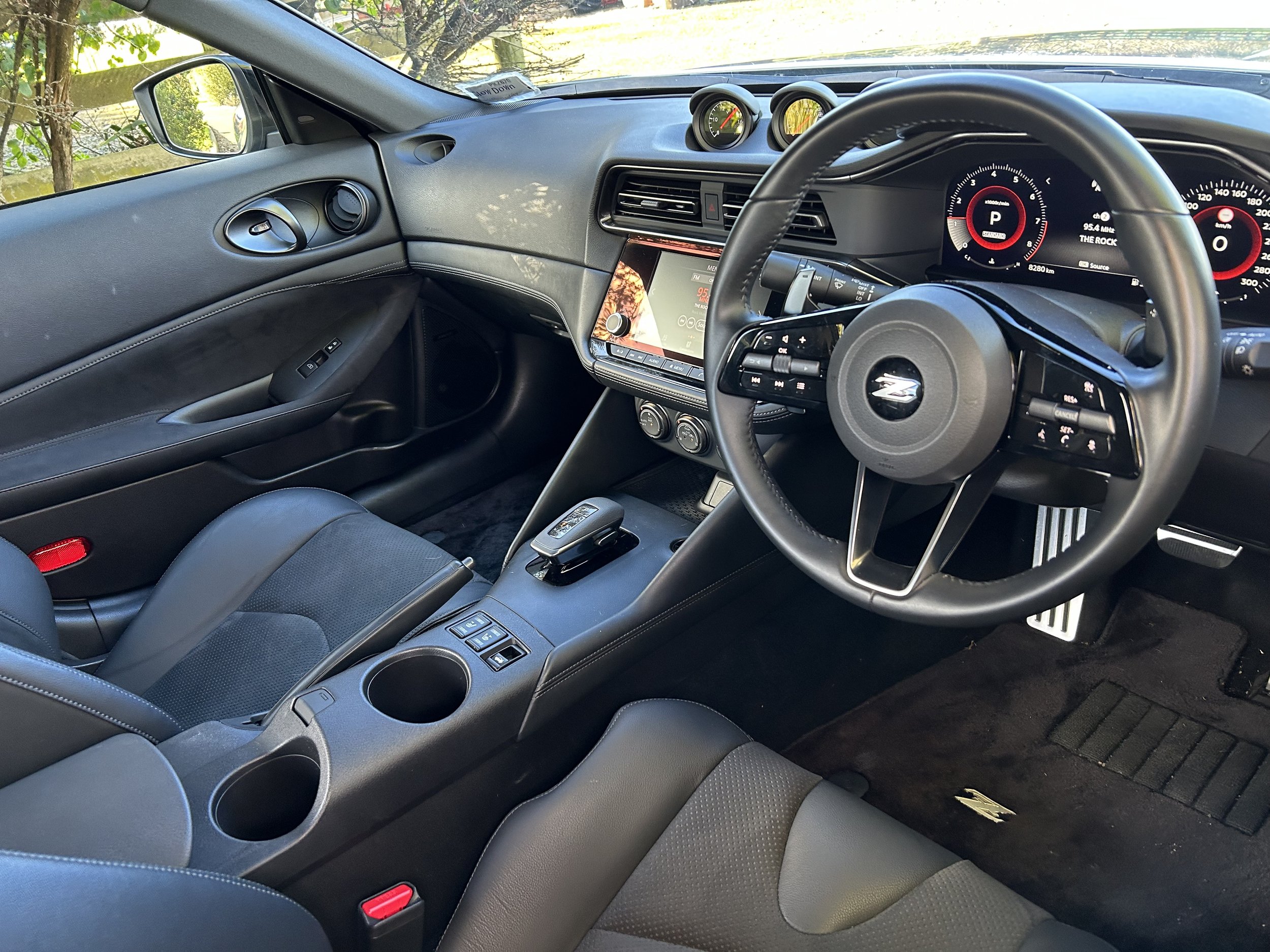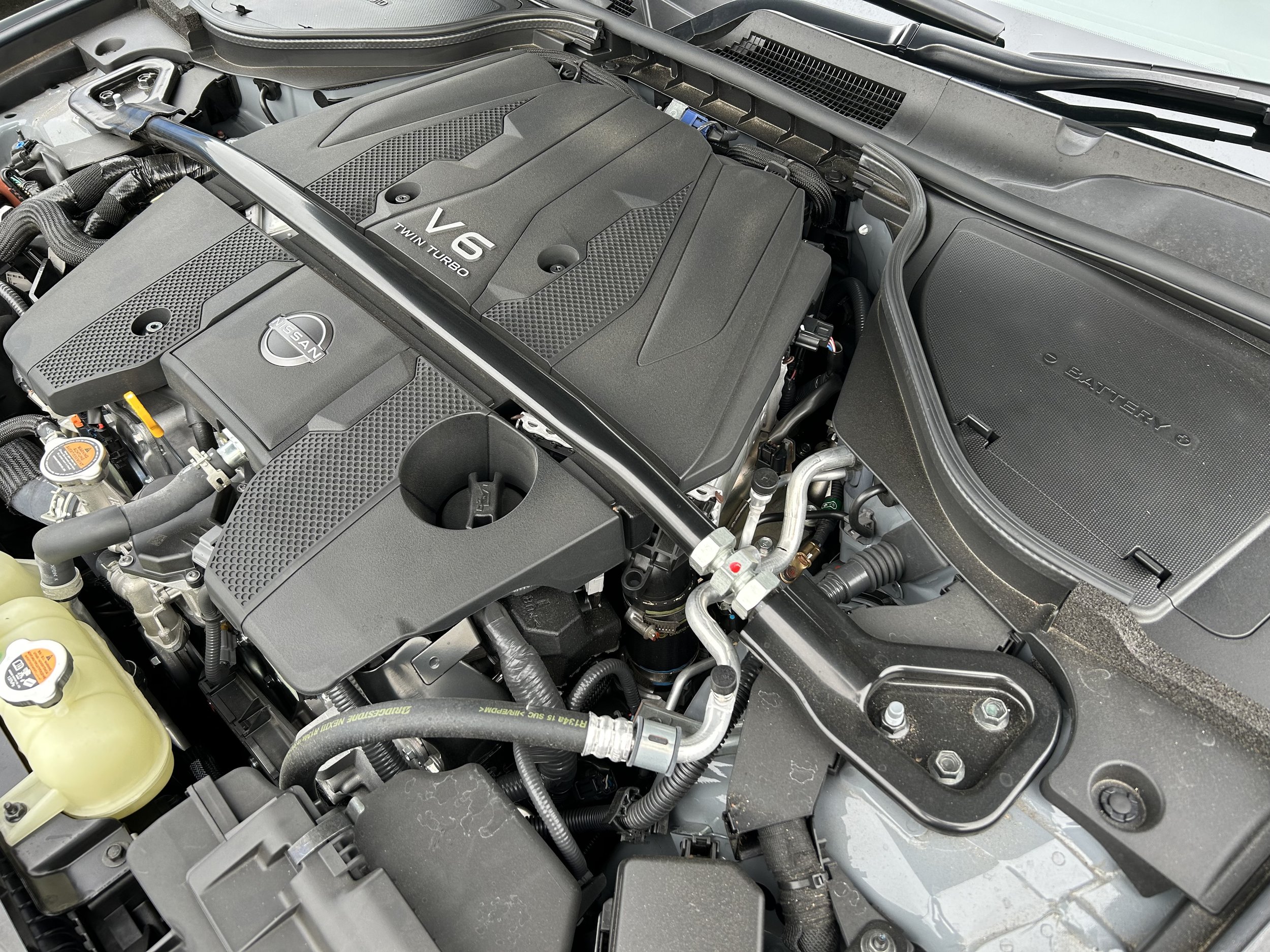Nissan Z roadtest review: Chasing that X factor
/The new generation of this famous ride still has an old-school persona.
Price: $84,990.
Powertrain and economy: 3.0-litre twin-turbocharged V6, 298kW/400Nm, 9-speed automatic, RWD, 10.9L/100km, CO2 253g/km.
Vital statistics: 4380mm long, 1845mm wide, 1315mm high, 2550mm wheelbase, 195L luggage capacity, 19-inch alloy wheels.
We like: Old-school feel; packs a hefty visual punch.
Not so much: Seat was quite right for me; coarse chip din.
OF all the things you coveted as a kid, how many are still around now and, more to the point, if ownership opportunity arose, would you still take it?
It’s a consideration that weighed on my mind when driving the Nissan Z in its seventh evolution.
Here’s a badge I’ve grown up with. The original 240Z, which came out in 1970, back in Datsun days, and only stayed in production until ’74, is a fond school days memory. The only one I ever saw in period was a neighbourhood car I and my mate Russell used to assess daily and discuss deeply. I’d never seen anything like it and was instantly smitten. This or a Triumph Stag? Easy call now, but a hard one then. History will surely say I called it right in going Japanese.
The first Zed is the only one I’ve never driven. Starting out in motoring journalism before I’d hit 20 allowed me to catch the train on every subsequent stop. The S130, Z31, Z32, Z33 and Z34? All boxes ticked.
Some provided a wild ride; no more so than the first-gen 300ZX I blasted down the local air force station’s runway with a fighter jet jockey sitting alongside. Our mission, to discover just how fast the big coupe could go, required not only brand but Defence Force sanction.
Important lesson: Just because a car looks aerodynamic doesn’t mean it is. As a very big number rolled up, I recall the Skyhawk pilot’s dry: “Yup, I’d be going wheels up about now.” Soon after, the car gave notice of interest in doing the same. When the wind rush lifted that long nose, the steering lightened alarmingly. Time to call it quits.
Sports cars generally don’t earn their keep. As much as that 240Z in particular is a desirable collectible now, it’s doubtful it or any of the subsequent generations delivered serious profit returns during their periods of sale. These were, and remain, a vanity project.
Alliance with Renault was likely a saving grace for the type; as the French could provide a ready-made platform and engine that delivered well.
Still, and especially after the GT-R emerged as a so much more potent performance weapon, the Zed has really surely become less vital as a brand talisman. When the previous Z34 retired after 10 years’ service, there really didn’t seem any likelihood of a replacement ever coming out.
And, yet, of course, it has. The new - just simply a Zed, no more numbers - still has the same internal code as the old, for good reason: It rides on the same chassis and though the design is fresh, the detailing really isn’t. Nor could it be.
Two-door coupes trade on their looks, and very few are as striking as this one. Yet, if ever a car hefts its history, it’s the Z. A high-powered V6 petrol engine mounted well back in the chassis and feeding the rear wheels, a snug two-seat layout and low-slung seating position. It’s a template that cannot be diverted from.
As result the Zed now spans modern and retro, a pillage of the past 50 years. The whole profile, the bonnet bulge, the triangular rear quarter glass, the special yellow paint restricted to the special edition Z Proto? All tie to the 240Z.
The silver roof accent is from a katana blade (samurai sword), a cut back to the 300ZX. The grille in general shape and elongated oval shapes of individual elements within the tail lamps are from old. The headlamps are new, yet the shape patterns after the first gen car’s scooped-out look. Take a close look at the bottom section of the Z’s rear glass. Etched there is “since 1969-”.
Inside? More. A small Z logo on the side of the auto transmission case. The general layout of the dashboard? You’ve seen it repeated since the 70s. Every Z has had that triple gauge cluster.
America was the making of this car; almost half the almost two million Datsun-Nissan examples so far produced went Stateside. That count is massive by home turf standards - Mazda has built only half as many MX-5s, for example - but not by America’s: For every one Fairly Z, Ford created at least five Mustangs.
Arguably, ex-Japan imports do far more to feed the Z habit here. Well, it’s the way, right? Still, it’s a funny thing. Sighting, in Z week, two 370Zs cruising about was a huge surprise. Prior to then, I couldn’t say when I’d last noticed even one.
That it has obviously evolved from the 370Z, which just as clearly drew from the 350Z, does the new Zed no harm, and anyway, its only in general detail. On closer inspection, the 2023 car is much more precise. This new surfacing is brilliantly concise, almost impossibly artful. Curves that gradually became increasingly exaggerated over previous generations are less so now. That the era of boomerang-style headlights is over is no problem. The new dew-dropped kind are more pleasingly shaped and still like no other car’s.
The interior quality, too, is significantly more impressive, though to a point only. It still isn’t plush. There are more tactile materials covering more surfaces, but some scratchy plastics remains. The instruments are more sophisticated looking than before and both USB-A and USB-C ports up front for phone connectivity. Z tradition demands it keeps the trio of dials atop the centre console. These continue to command comment, but rarely demand driver scrutiny.
Comfort is reasonable; obviously it demands a certain degree of litheness to effect decorous egress and entry.
Practicality was never a strong point before and isn’t much better. Within the immediate occupant area, there are two cupholders, bottle pockets in the doors and space for oddments. A large storage pocket sits behind each front seat as well. The boot is small. At least Nissan has relocated the strengthening brace to make loading in and out a little easier, but luggage-wise you’ll be restricting to small carry-on suitcases and daypacks.
These kinds of car are unavoidably cosy, but it’s more spacious than a Supra and though, even with a camera and anti-collision alerts to assist, reversing out of angle parks can be a bit nerve-wracking, all round visibility out of the Nissan is reasonably good, all things considered. You just have to come to terms with sitting at the same height level as a big truck’s wheel hubs.
There’s argument that Nissan might have done itself a favour with a budget tuner-spec version lacking the leather, metallic paint, high-end audio and full suite of driver and safety assists this one gets, but I doubt it’d work in NZ; that’s a used import zone. So it comes out quite fully provisioned, and though the Proto is the one for the best look, the standard car has more than enough purpose to its appearance. It also looked pretty decent in the slightly metallic grey here.
The driving is good - with caveat, of course, that it’s still honed to ultimately deliver a bruisingly physical old-school experience.
The driving position is excellent; the seats and the steering wheel offer plenty of adjustment, though some controls for the first are fiddly - not least those placed, for history’s sake, on the side of the base. It also doesn’t give quite enough lumbar support for the tall, so expect a few twinges after an hour or so at the wheel, but the back and base are broad; again that’s an American expectation. The steering wheel now adjusts for reach and is the perfect diameter.
With an orthodox automatic gearbox, it could be judged less an outright sports car than the shape and stance might suggest. That latter ethos obviously suits the biggest market. The majority of buyers Stateside - even of sporty cars - prefer a self-shifter.
In all reality, it’s a shame it doesn’t have an advanced automated manual. It’d be worthy of that technology, this is a belt-tightening exercise and no brand in the Alliance has one to offer.
I’d love to drive the Zed in full manual, but probably just for a day or two. Yet if full ownership was asked, I’ve have to concede the auto in the car on test would be more logical.
Nine speeds is a lot; no surprise that in fully automatic mode, as soon as it is fed the berries, it’s keen to drop a ratio. Take over changes for yourself with the paddle shifters behind the steering wheel and you’re basically running seven forward gears. But in that format it will also lend gratuitous throttle blips on every down change.
The Infiniti-sourced VR30DDTT engine brings an 18 percent increase in power and 28 percent increase in torque over the old 370Z. It’s patently the biggest transformer of the new Z’s character. And, yes, it’s got stomp; not as much as a Mustang V8, but hardly weak-kneed, either. You give it a prod, it’ll produce plenty of punch. But even though it has decent low to mid-range pull, you need to work the it hard to make indecent progress.
But does it need a stronger soundtrack? I had two twin turbo V6 vehicles in the drive in the one week. Nissan’s sounded good at low to medium revs, but was always outspoken in company of the Ford Ranger Raptor. Sure, that ute is quite the extrovert, probably to point of annoyance, in all reality. Yet a bit more brio to the exhaust note wouldn’t hurt this Nissan. Z shouldn’t stand for zzzzz.
Ultimately, the challenge arising with the Nissan is living with another kind of noise. Massive road roar. The shape of the cabin. those wide, ultra low profile Bridgestones. Our road surfaces. The din when running this car on coarse chip was verging on intolerable. If you want a relaxing coupe, and plan to cruise more than motorways, it won’t be for you.
A shame that, because the chassis on the other hand works well on our roads. Sure, it's stiff and the ride comfort is best described as 'firm', but it corners flat and fast with ease.
It gets its traction down when cornering hard, but you also can drive it to a point where the tail will begin to kick out. Not nastily. Well, not in the dry. On wet roads, yeah, more awareness and some restraint makes sense. Even the ESP cannot always keep it from getting a touch too lively. Still, those of a certain age will revel in the rear-wheel drive feeling. It’s just as old-school in that respect as the Mustang.
Not so much the steering, perhaps. The old cars had a hydraulic rack; the newest delivers with electrically assisted power steering. It makes the wheel lighter, always, but in doing so loses something in the precision. Less heft, yes, but perhaps less feel, too.
That much is different to the older Z cars, but so much else seems a continuation. With a big grunty V6 petrol engine and macho feel and looks - it's one of the few that still provides a proper analogue driving experience that really engages and tests a driver. It’s still also an indulgence; better kept as a fun car for weekends rather than tackling the daily commute. Apart from the awkwardness of a car such as this in heavy traffic, there’s also the fuel burn. Though it was much less thirsty than the Raptor, the average still came to 11.2 litres per 100km, so running costs won’t go unnoticed on your credit card statement.
As new as it is, the Z is a step back. By arriving during a period when we are having to re-evaluate all our driving choices, it makes us more aware than ever that time cannot be stopped, nor can the clock be turned back. There’s no avoiding the future and the prospect of immense change. A change for which the Z is utterly unprepared.
Could this car sustain an electric involvement? It’s a fascinating question; Nissan, you’d have to think, would have the technical nous to allow that kind of re-interpretation. whether it wants to is another matter. For all these years, they’ve pretty much only ever made it in one flavour.
But who knows what could on on the drawing board? In 2019, no-one would have bet on the 370Z, by then six years old, being replaced. And yet, the following year, we were told the band had this new album coming.
To be honest, for me, the new Zed didn’t have the same emotional pull that made my mate and I walk up a very steep street when coming home from school - a route we didn’t need to take - just to study the original car’s lines and imagine its performance. But that could well be an age thing.
On the weekend phase of the test, we tripped to an out-of-town cafe; a great excuse to take it down some brilliant, quiet rural roads. After coffee, I came out to see a couple of kids taking selfies with the car.
Clearly, after all these years, the Z still has its X factor.


